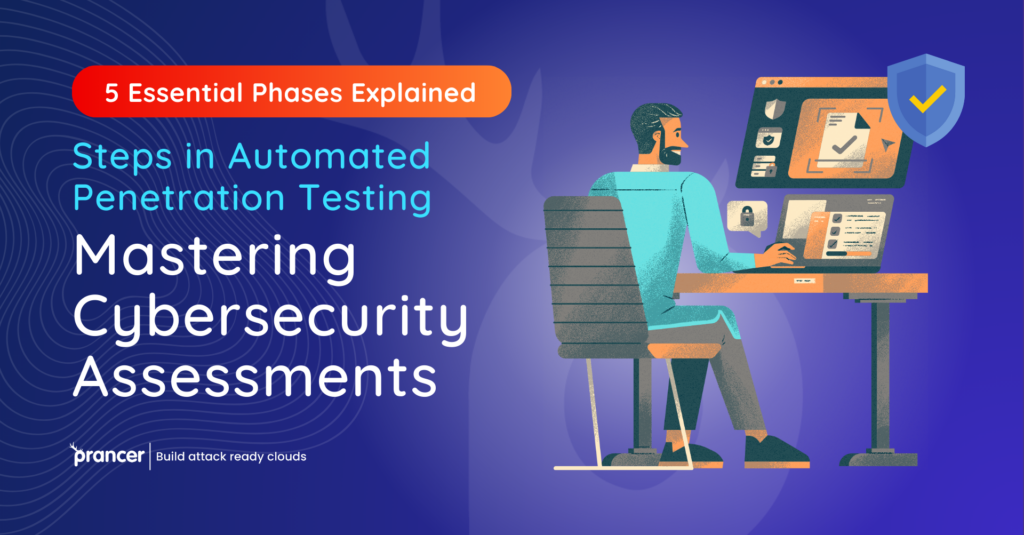

The buzzword in the racing cybersecurity field is ‘Automated Penetration Testing’. This unique strategy is instrumental in enhancing cyber defense. Through the use of simulating cyber attacks in order to detect any weaknesses, automated penetration testing steps act as a proactive approach to enable organizations to improve their security position. This blog, powered by Prancer, will seek to peel-off the cover on the very process of automated penetration testing and try to give a step-by-step explanation of its five imperative stages. With Prancer’s guidance, we learn the importance of such steps in a holistic cybersecurity assessment for fortified security tools in the world of digital technology.
Phase 1: Planning and Reconnaissance
The planning and the reconnaissance are the first steps in the automated penetration testing process. This phase forms the basis of an effective penetration test. Prancer highlights the significance of tests scope and goals definition. It comprises recognizing the systems to be tested and acquiring intelligence about them. Both passive and active reconnaissance is performed for the collection of passive and active data respectively that is used in successive stages of the penetration testing.
Phase 2: Scanning and Analysis
The scanning of target systems is the second stage of the automated penetration testing as soon as the groundwork is done. This stage includes the application of automatic tools for analysis of how a target system responds to different intrusion attempts at it. In this case, the prime role is played by Prancer’s state-of-the-art scanning technologies which help to detect open ports, running services, and other elements that could be treated as a weak point. This stage is essential in defining the logical area, where the attack takes place, of the victim system.
Phase 3: Gaining Access
Access is a critical step in automated penetration testing. This step imitates an actual-world assault utilized to take advantage of the exposed weaknesses. The methods that can be exploited include SQL injection, cross-site scripting or buffer overflows. Prancer’s specialization in this phase makes sure that it is performed in the right, convenient, and responsible way, meaning that it is aimed at revealing vulnerabilities without actually causing harm or loss of the data.
Phase 4: Maintaining Access and Analysis
Once access is obtained, the next is step is lateral movement and determine the breadth of the breach. In this stags of automatic penetration testing, the depth of penetration and the type of information that can be entered are determined. In this phase, Prancer plays an ins and outs role as it is important to analyze how much potential could be lost and the impact that existing security standards have.
Phase 5: Reporting and Recommendations
The last step in the cycle of actions in automated penetration testing is aggregation of a state-of-the art report. This report is designed by Prancer and highlights the identified vulnerabilities, their respective risk levels as well as recommendations for securing the environment. As this report is detailed and easily accessible, Prancer empowers organizations with the information they need to strengthen the defenses of their information and technology systems.
To conclude, the stages of automated penetration testing are vital in the modern world of technology. As cyber threats progress pranner becomes invaluable with his automated penetration testing services. This is the fifth and the last phase that has been reviewed in this blog whereby the role of automated penetration testing has been clearly spelled out to address security loopholes as a precautionary measure. With the increasing cybersecurity threats, the adoption of automated penetration testing is not an alternative but a need to protect digital properties.